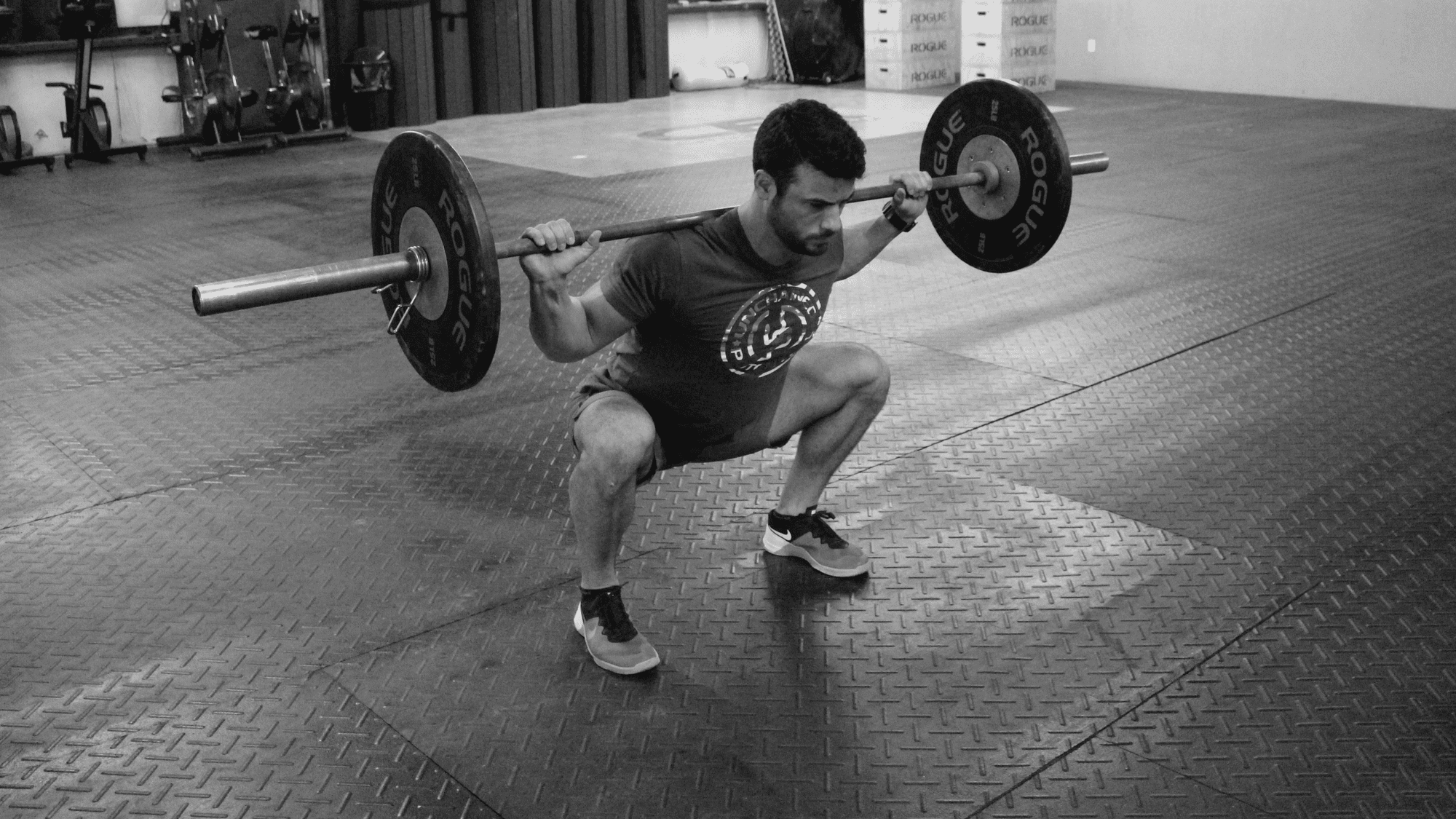Most people don’t think of the upper body when performing a back squat. It’s generally thought of as a lower body strength training movement. But if you don’t have certain pre-requisites of squat upper body mobility, it can lead to shoulder, low back, and lower body issues.
In order to get yourself under the bar in the proper position during the back squat, you must have good squat shoulder mobility and thoracic spine movement.
By lacking squat upper body mobility in either the thoracic spine or shoulders, the lumbar spine will typically have to extend or flex more to compensate. If the lumbar, which is meant to be stable during a squat,, has to move more then this can cause orthopedic issues at the low back.
When the low back is in a poor position, it doesn’t provide a solid foundation for the rest of the lower body to move from. If the lower body doesn’t have a solid foundation to move from, then this places the lower body at risk for injury and doesn’t allow for proper transmission of force from your lower body, through your core, into your upper body, and finally, into the bar. AKA YOU DON’T LIFT AS MUCH WEIGHT.
Here are 2 Quick Tests to determine if you have enough Upper Body Mobility to Back Squat Safely and Effectively!
Is Your Upper Body Holding Your Squat Back?
Shoulder External Rotation
Having the ability to go into shoulder external rotation is an imperative squat upper-body mobility. If you can’t, then compensations will occur and your risk for injury increases while your performance will decrease.
Here is quick test to determine adequate shoulder external rotation mobility:
Key Points:
- Don’t force your shoulder into this position.
- Comfortably, let gravity bring your forearm to the ground.
If you are capable of getting your shoulder, into a position as shown in the video, then we know that you have proper shoulder mobility.
If you can’t, then you have something to work on if you want to continue to back squat.
There are many muscles that can limit shoulder external rotation range of motion. Here are a few self-myofascial release areas that you can work on to improve shoulder mobility.
Once you have worked on those areas with a lacrosse ball or some other implement, you need to work on that mobility with movements such as:
- Hold shoulder blade against rib cage using the opposite hand.
- Stretch should be felt in the lats.
- Pin shoulder blade against a stable object.
- Then bring your arm across your body.
- Stretch should be felt in the back of the shoulder.
Thoracic Spine Extension/Rotation
The thoracic spine also has to have a certain amount of mobility in order to decrease stress on the shoulders with the squat as well as decrease the demands for mobility on the lumbar spine.
To test to see if someone has the pre-requisite thoracic spine mobility, you will need someone to assist you. Try this:
Ideally, we like to see the trunk of the body reach 45-50 degrees in relation to the ground. If you aren’t sure, the Iphone has an app called Clinometer that you can place on the person’s upper back to have a more accurate measurement.
If someone can’t get to 45-50 degrees of thoracic rotation/extension, then we need to improve that by performing thoracic mobility drills such as the Sidelying Thoracic Rotation-Extension
Key Points:
- Make sure to twist through the thoracic spine and not just at the shoulder.
- Ensure the top knee is propped on a foam roller at hip height to lock out the lumbar spine.
Sidelying Rib Roll
Key Points:
- Grasp your down-side ribs with your top hand.
- Use your bottom hand to stabilize your knee on a foam roller,etc at hip height.
- Use top hand to pull on ribs to twist into thoracic spine extension/rotation.
Bench T-Spine Mobilizations
Key Points:
- Make sure to keep ribs down towards belt during the entire movement.
- Stretch should be felt in lats or upper back.
So, if you are back squatting and are either having difficulty because of some nagging injuries or are performing as well as you would like, make sure to check your squat upper-body mobility and clean-up any issues to help improve your orthopedic health as well as your performance.






